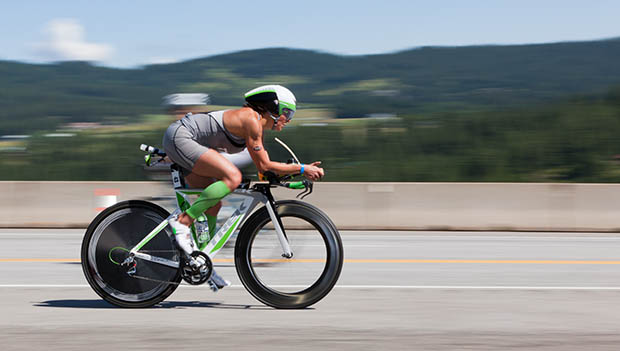
It's never been a better time to buy a beginner triathlon bike. Call them "affordable" or "entry level," but these bikes are packed with impressive features at a not-so-impressive price.
In a world where you can spend upward of $16,000 on a bicycle, we'd argue that unless you're a professional, beginner triathlon bikes will more than do the trick, as they punch way above their weight class and provide an impressive value for their cost. Due to decades of wind tunnel data and advances in component materials and technology, even the most basic modern triathlon bike can give you an edge over your competitors—and give you a platform you can grow with as you progress as a triathlete.
But where should you start? What should you keep in mind?
Especially for—let's call them "non-bike nerds"—learning the ins and outs of what makes a bike right for you can be tricky to navigate. That's why we listed a few things to keep in mind before you buy a beginner triathlon bike.
Price
This one is obvious, but it has to be addressed. How much are you willing to or are able to spend on a bike? First, take a serious look at your goals-—if you're just testing the waters and don't imagine doing more than a couple local sprint or Olympic triathlons a year, it may not be a worthwhile investment to shell out a few thousand bucks for a carbon frame and high-end components. On the other hand, if you're planning on training hard and being competitive (or jumping up to a 70.3 or IRONMAN), you might want to consider a bike with more features.
The most basic triathlon bikes cost around $1,000 to $1,500, and that initial investment has a ton of value as far as geometry and aero advantages go. Beyond that, you can consider a bike with deeper wheels or nicer components, but these gains will cost you significantly more and won't have as significant of an impact on speed or performance. Regardless, we always recommend buying the nicest bike you can afford at the time, so you don't have to deal with pricey upgrades later.
Tri vs. Road
Many beginner triathletes purchase a standard road bike as their do-it-all option instead of investing in a triathlon-specific bike. Road bikes are more versatile, meaning they're better for climbing, descending and handling in general, and they're also easier (and safer) to ride when riding in a group.
If you go this route, consider purchasing some clip-on aero bars, and head to your local bike shop to get a bike fit to adjust your riding position—you can achieve similar efficiency as a triathlon bike at a fraction of the price.
Comfort
We'll keep this one simple: If a bike isn't comfortable, you're not going to enjoy riding it, no matter how much it cost or how fancy it is. A comfortable bike is inherently more efficient, as you'll be able to train and race harder and longer. We highly recommend visiting a few of your bike or triathlon shops in your area and testing out their entry-level offerings to see which feels best. Have an employee roughly adjust your saddle height (more on this below), and feel free to bring your own pedals to get it set up as close as possible to how you'd actually ride it.
New vs. Used
As with anything, there are a lot of great used triathlon bikes to be found by athletes who are upgrading to a new ride or are leaving the sport after they found it wasn't for them. On the flip side, there are also bikes that have been ridden hard for years (or crashed, unfortunately) that you should stay away from. Buying new is always the safer bet, but if you have a limited budget and want a bike with more features, purchasing a used ride can be a great way to go. Click here to learn what to look for when buying a used triathlon bike.
Find the Right Size
If you're new to cycling or triathlon, you might be surprised to know that, like shoes, bikes come in different sizes. This is one of the most important aspects to consider before buying a bike, such as if the bike's frame is too large or too small for you (even a professional bike fit won't be able to make it comfortable or let you maximize the aero advantages).
Don't settle for a frame that's "good enough" just because it's in stock or you prefer its color over another bike—the shop can always order a specific model in your correct size if it's what you're looking for. Most bike shops employ professional bike fitters who can help you make this decision and show you what's best based on your height, leg length, reach and more.
Additional Gear
Buying a triathlon bike is just the first purchase of many if you're new to the sport. No matter your budget, remember you likely have a few hundred dollars of additional gear to purchase, including triathlon bike shoes, clipless pedals, a helmet, an aero bottle, tubes, training and more. You can always purchase most of these items down the road once your wallet recovers, but a helmet is one piece of gear that's absolutely required, so keep this in mind as an immediate cost.
Some bike and triathlon shops offer packages for beginner cyclists and triathletes that include the bike, a helmet, pedals and shoes at a discounted rate (and if not, don't be afraid to ask if they can make a personalized deal for you).
READ THIS NEXT: The First 10 Things Triathletes Should Buy


